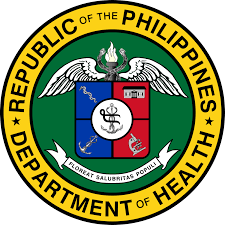FOR the longest time, the Philippines has been engaging in a battle against infectious diseases, for which the government – particularly the Department of Health (DOH) has launched quite a number of programs primarily designed to prevent casualties.
In a data collated by Statistica, a global organization engaged on statistical research, respiratory ailment tops the list of killer infectious diseases in the country.
Speaking of infectious, Statistica particularly hinted at Tuberculosis (or simply TB) a communicable disease affecting the lungs. Infectious as it is, TB could easily be transmitted to another person through the air we breathe when unknowing TB carriers cough, sneeze or spit.
Compelling Numbers
In the list of the top 10 leading illnesses, six are related to TB, which makes it more imperative for the government to address a growing concern the way it did during the COVID-19 pandemic.
In a 2021 World Health Organization (WHO) data, TB incidence in the Philippines was pegged at 741,000. Of this number, around 61,000 people died.
Interestingly, the DOH data showed less than half of what was recorded by the WHO, which has been using a variation of extensive methods depending on the region. In our case, WHO used something that suits up for the demographics in Southeast Asia.
With the WHO data released three years ago, there is a mathematical probability that TB cases in the country could have already surpassed the one million mark since the Philippine government has been preoccupied battling the pandemic.
Hence the need to address the problem with utmost urgency.
Tuberculosis Up-Close
While TB is an infectious disease, modern-day science showed that it can be cured but only if the government could act on it with a sense of urgency – just like what the entire world did during the onset of the COVID-19 pandemic which effectively put the global economy in a standstill.
According to the WHO, about a quarter of the global population have been infected with TB bacteria. Of that figure, five to 10% have developed full-blown TB, for which treatment is imperative to prevent the spread of the disease – or worse, death.
There are quite a number of people who are gullible to TB infection – those who are into cigarette smoking, people suffering from diabetes (high blood sugar), persons deemed with weak immune system (immunocompromised) and malnourished.
Interestingly, TB which targets the lungs also affects the kidneys, brain, spine and skin.
Preventing TB
While TB is curable, the better approach is prevention as most medical professionals would recommend.
But with persisting symptoms, one should seriously consider the idea of seeking medical attention over prolonged cough, fever and unexplained weight loss as early treatment for TB can help stop the spread of disease and improve chances of recovery.
For those who are into cigarette smoking, suffering from diabetes (high blood sugar), immunocompromised, and malnourished, the doctors advice is to get tested for TB infection.
If prescribed treatment to prevent TB, complete the full course, while practicing good hygiene when coughing, including avoiding contact with other people and wearing a mask, covering your mouth and nose when coughing or sneezing, and disposing of sputum and used tissues properly.
Special measures like respirators and ventilation are important to reduce infection in healthcare and other institutions.
DOH at Work
For one, the DOH has been working hard to contain infectious diseases like TB.
Proof of such is the so-called TB-DOTS, which stands for Tuberculosis Directly Observed Treatment, Short Course which has long been established from the higher healthcare institutions down to the community level.
As far as the DOH is concerned, poverty should not be a deterrent for TB patients to be treated for a disease that is deemed curable.
The DOH screens household contacts for confirmed TB patients and provides pre-treatment evaluation such as Blood Chemistry, Chest X-ray and sputum examinations – on top of the Patient Initiated Counseling and Testing on TB HIV.
The agency embarks treatment on both regular and Drug Resistant TB.
There's just one glitch, the agency mandated to promote public healthcare has run out of supplies for TB medicines.
#WeTakeAStand #OpinYon #WHO #DoH #TBcasesinPh
